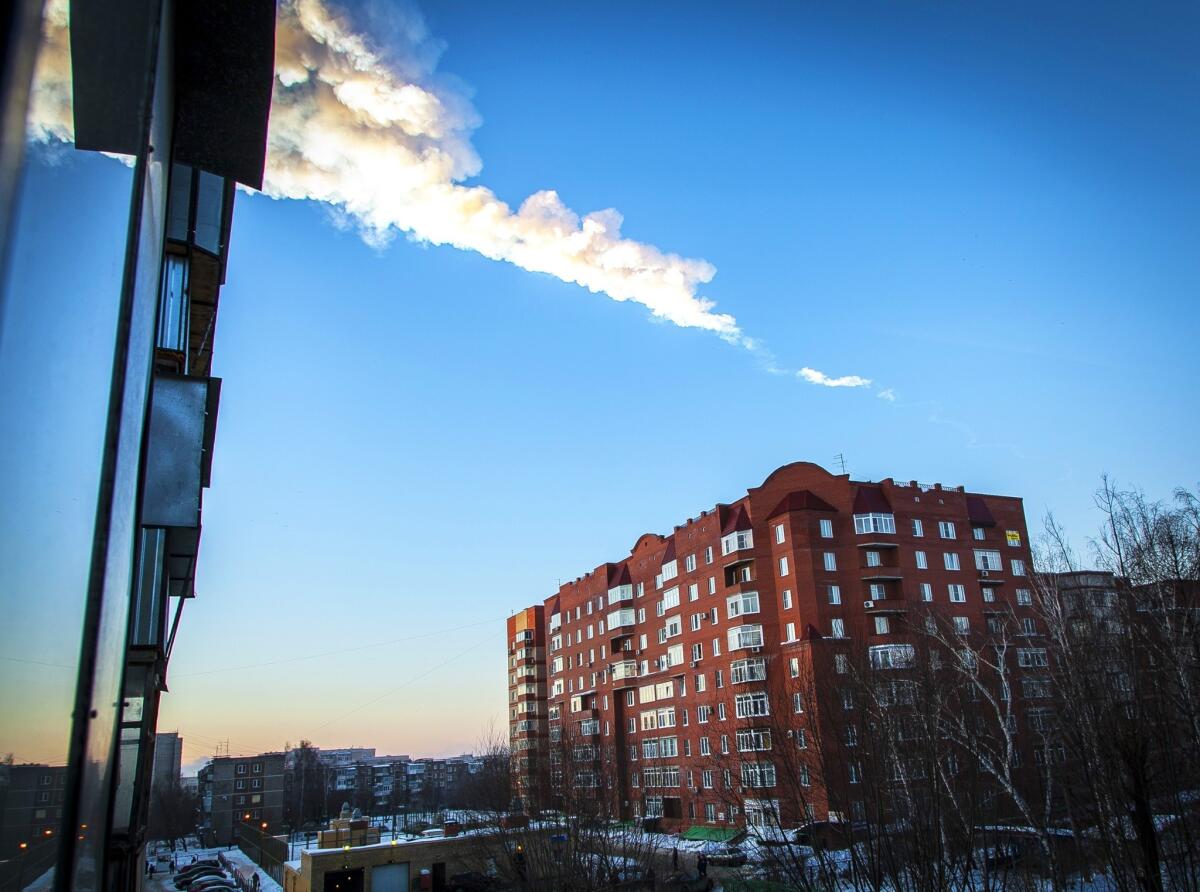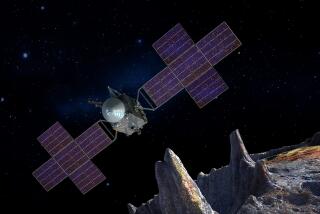UN aims to fight asteroids, creates a global warning network

- Share via
Even the United Nations is taking the threat of asteroids hitting our planet seriously.
Last week, the U.N. General Assembly approved measures to coordinate detection and response to asteroid strikes that could level cities and possibly destroy our civilization.
Specifically, the agency voted to create an International Asteroid Warning Network made up of scientists, observatories and space agencies around the planet to share information about newly discovered asteroids and how likely they are to impact Earth. The group will also work with disaster relief organizations to help them determine the best response to an asteroid impact like the one that rattled the Russian city of Chelyabinsk in February.
PHOTOS: Asteroids and impact sites
The U.N. will also set up a space mission planning advisory group to look into how humans might deflect an asteroid heading our way -- the best options, the costs and the technologies needed. The results of that study will be shared with space agencies throughout the world.
The General Assembly also agreed that the existing U.N. Committee on the Peaceful Uses of Outer Space would monitor threats from asteroids and help plan and authorize a deflection campaign if necessary.
These measures were based in part on recommendations from the Association of Space Explorers, a professional society of astronauts and cosmonauts. The group, made up entirely of people who have flown in the space, submitted a report to the U.N. in 2009 titled “Asteroid Threats: A Call for Global Response.” The report outlined steps for how the U.N. could help prevent a dangerous asteroid strike.
Speaking at a news conference on Friday, Apollo 9 Astronaut Rusty Schweickart said the group believes decisions on how to respond to an asteroid threat must be handled by an international body.
As of now, the only way to deflect a dangerous asteroid is to detect it 10 to 15 years in advance, and then alter its orbit slightly so it would miss Earth, Schweickart said.
“The question is, which way do you move it?” he said. “And if something goes wrong in the middle of the deflection, you have now caused havoc in some other nation that was not at risk. Therefore, this decision of what to do and how to do it, what systems to use, and all the rest of it has to be coordinated internationally.”
Schweickart described the measures recently adopted by the U.N. as a skeleton of a decision-making process that will help guide the international community on how to handle a threat if one arises.
“I say a skeleton because it has no meat or muscle on it yet, “ he said. “That is the challenge as we go forward.”
The members of the space explorers group have already outlined the next steps that they would like to see implemented in a global asteroid defense plan.
They want to see national governments include asteroid impacts in their disaster response plans and budgets, and they want policy makers to direct national space agencies to launch an international asteroid deflection demonstration in the next 10 years.
They also want to find the nearly 1 million near-Earth objects that could potentially strike our planet.
“One-hundred years ago, if the Earth is hit by an asteroid ... that is bad luck,” said Ed Lu, an member of the group who spent seven months on the International Space Station and is now chief executive of the B612 Foundation. “If 20 years from now we get hit again, that is not bad luck, that is stupidity. We can do better as a race.”
Want to learn more about asteroid defense? Follow me on Twitter for more stories like this.
ALSO:
NASA officials talk challenges, and thrills, of capturing an asteroid
NASA plans to put an astronaut on an asteroid: This is how [Video]
Going asteroid hunting: NASA wakes telescope from 2 1/2-year nap







